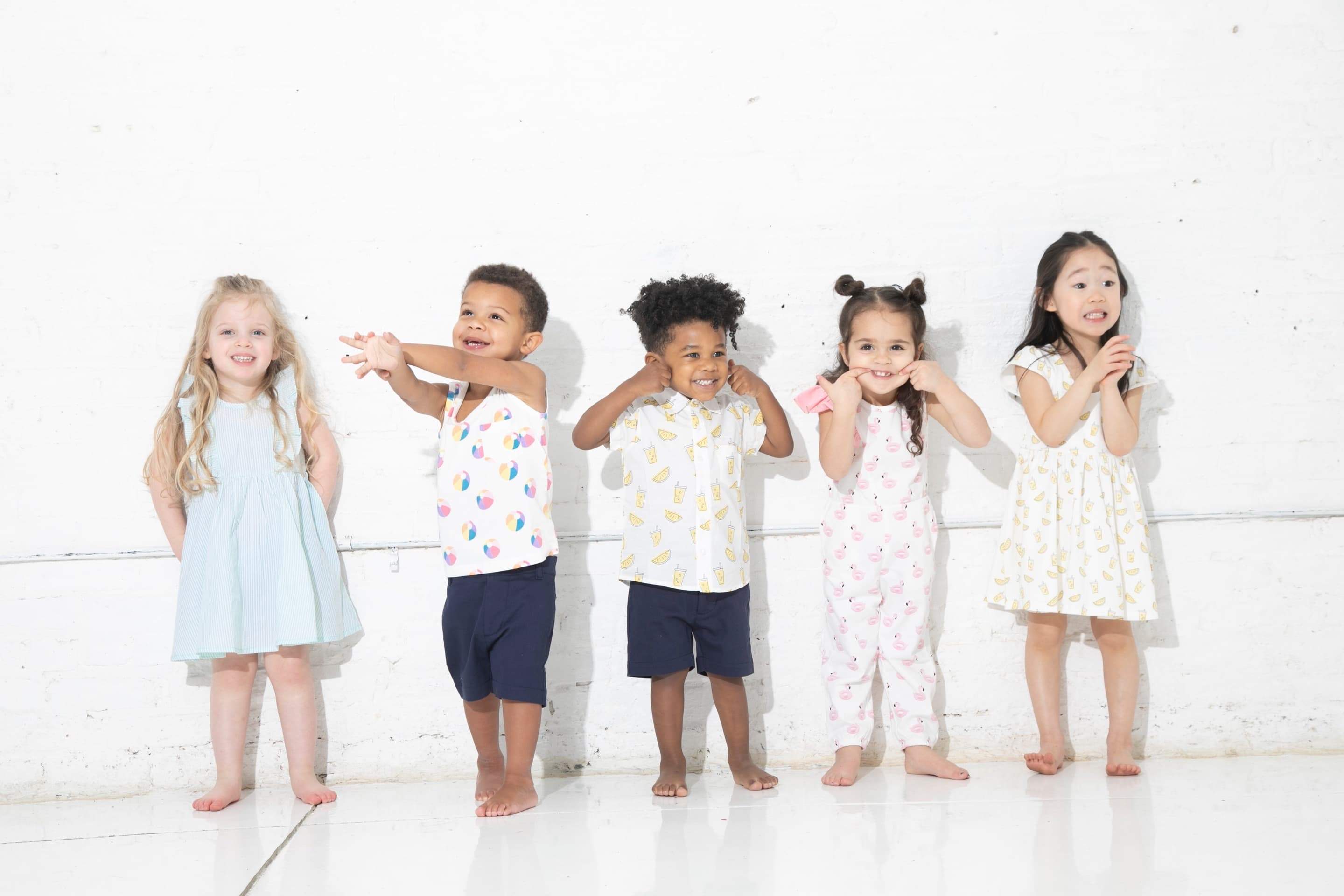6 Ways You Can Teach Your Child to Be Kind, Empathetic, and Inclusive

We teach our littles how to clap their hands, hold a spoon, and roll a ball—but is there a lesson more monumental than the art of kindness? Sensitivity and empathy can be learned from an early age through actions both big and small, says Barbara Grant, a developmental specialist and Founder of Nudge and Cradle in Washington DC. 'What's most helpful is to be intentional as you talk about, teach, and model these ideas.' (Research shows infants as young as eight-months-old can display precursors to empathy, like showing concern if a parent is upset.) To foster those all-important skills in your little, take a look at Grant’s six tips.
Label Feelings and Emotions
You can help your toddler find words for his or her own emotions by labeling them (for example: “You must feel so frustrated that Michael took your toy”)—and as the months go on, continue to talk about those feelings as your child interacts with his world, says Grant. If you’re out at a park and see another child excluded from a game, you can say, “How do you think that boy felt when the other kids left him out?”
Use Pretend Play
Bring out the dolls and stuffed animals and you’ll hold your little’s attention during intentional “empathy” talks much longer. You can say, “This stuffed animal is sad, what can we do to make him feel better?” says Grant. (Then show your child how to give the stuffed animal a hug, pretend to bake 'feel better' cookies for him, or ask the stuffed animal how he’s feeling.) For older kids, you can use charades-style games to act out different emotions and the various situations in which they might come up.
Pick Thoughtful Books and Movies
It can be tough to see the world through someone else's perspective (especially at 2-years-old), but your child may have a much easier time relating to the experience of a storybook or movie character, says Grant. Books that teach children about specific emotions, disabilities, or learning challenges now exist across the board and can be found easily with a quick Amazon search, says Grant. Check out her book recs below!
Explain Learning Differences
Struggling to explain to your child why someone in their peer group doesn’t act, speak, or learn like they do? In these cases, Grant says it’s helpful to bring your child’s own experiences into the conversation. For example, you can say, “You know how it can be hard for you to sometimes sit still and read books? For Michael, it’s hard for him to communicate his feelings, which is why paces around. It doesn’t mean it’s wrong, it's just different from what you do,” says Grant.
Take Them Out of Their Bubble
While teaching kindness and empathy works best in daily doses, taking kids out of their regular routine (say, by bringing them to a volunteer opportunity in an impoverished neighborhood, or heading to a cultural experience where there’s bound to be kids who look and act different than them) can spark conversations, curiosity and understanding.
Be Their Best Example
Kids copy what they see, plain and simple, says Grant. Practicing kindness, empathy, and understanding—whether you’re chatting with your partner, on a work call, or conversing with a waitress at lunch—is the easiest way to show a child what it means to be sensitive to the feelings of others.
(For an extensive list of books by subject, check out this great resource from The Center on the Social and Emotional Foundations for Early Learning.)













